13 ways to make money as an artist in 2025 – real examples

Table of Contents
Is it really challenging to make money as an artist?
There’s a long-standing stereotype that making a living as an artist is nearly impossible. While that might have been true in the days of Vincent Van Gogh and Johannes Vermeer, it’s no longer the case in today’s digital era, where building a loyal following and monetizing your art is more achievable than ever.
If you’re a creative individual, you can transform your passion into a profitable career that brings both recognition and financial success.
To help you get started, we’ve compiled two comprehensive guides—one focused on graphic artists and designers (the one you’re reading now), and the other on music artists (check out our latest article on how artists make money).
Start by considering these 13 active and passive income ideas for artists in 2025.
1. Teaching art online or face-to-face
If you are the proactive and extrovert type of artist, finding students shouldn’t be a problem. But first, you have to establish which type of teaching will be more suitable for you.
Teaching face-to-face
If you take a closer look, you’ll probably find that your neighborhood offers opportunities for making some money with art. Even better if you have an attractive niche like astrophotography, calligraphy, or street photography.
Some ideas on how you can contribute to the social life of your community while gaining experience and earning money:
- Offer painting (or whatever your specialty is) classes or one-day workshops to adults, kids, or high-schoolers in your local community center
- Organize an exhibition alone or invite other artists to participate
- Offer short, interactive art workshops for corporate events and parties
- Organize “plain air” painting workshops in nature
Teaching online
Teaching online courses can be a better option for reaching a wider audience. However, tutoring several people at the same time will be much more difficult online than face-to-face.
Another option is to turn your teaching into a form of passive income. You’ll have to prepare the material once, and it can bring you income even for several months or years.
Some ways how you can become an online art tutor:
- Sell courses on platforms like Udemy and Skillshare
- Sell guides and tutorials on your own website or Sellfy page (these can take any form – video tutorials, ebooks, step-by-step guides with images, etc.)
- Create your own YouTube channel about your experiences as an artist (we’ve already explained that selling tutorials on YouTube is easy as soon as you learn the basic principles of this process)
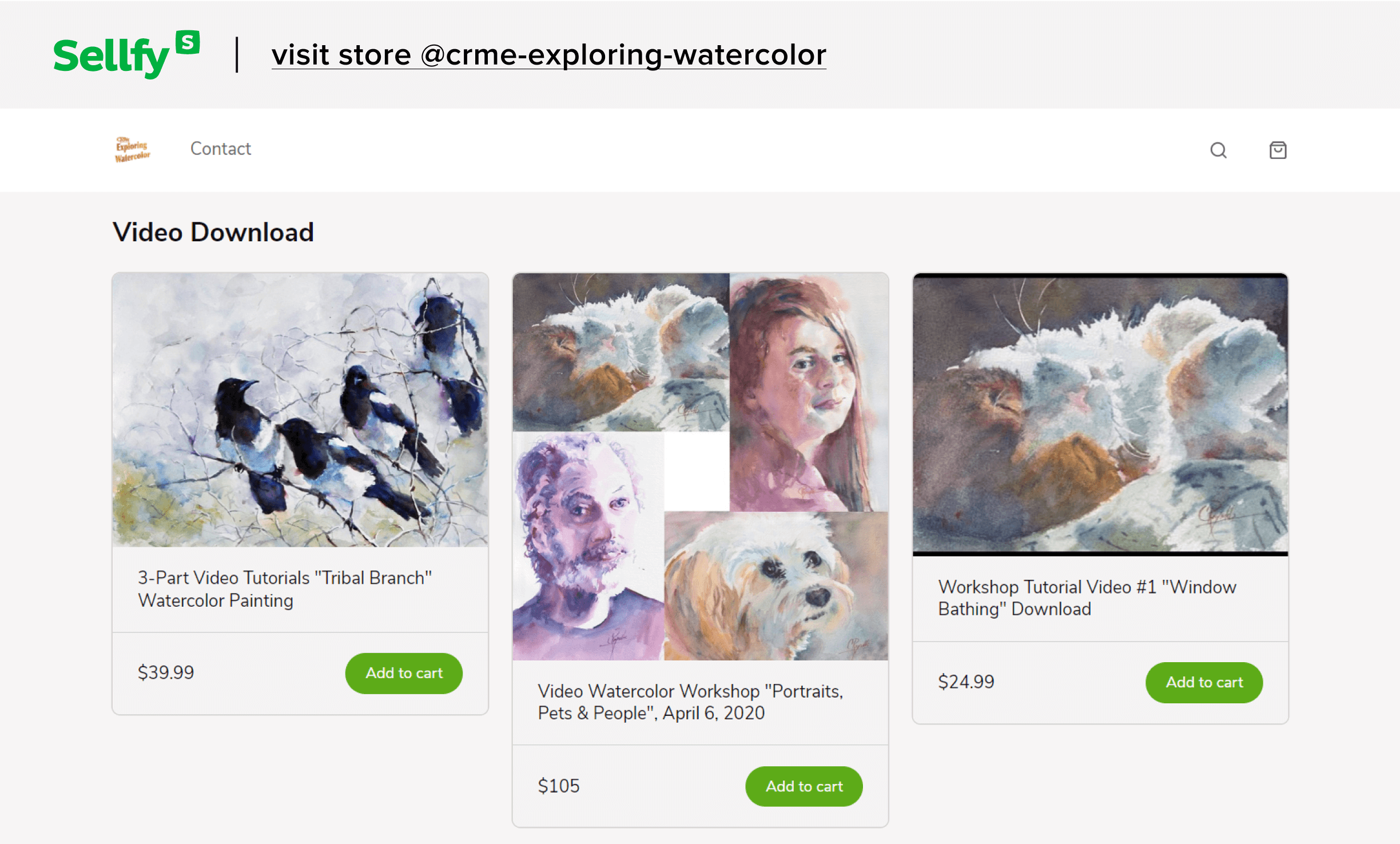
Pros:
- A great way of earning money doing what you already know – and love.
- An exciting process that will also include a lot of learning for yourself.
Cons:
- A simple guide is not going to cost substantial amounts – especially if the competition is fierce. To make it more valuable, make your guide very detailed or specialized.
- Creating a course can be complicated and time-consuming, so arm yourself with patience.
2. Selling vector designs on Sellfy
If you have a knack for graphic design, there’s a whole new spectrum of active and passive income types you can make use of.
Selling vector designs might be one of the best ways for you to learn how to make money as a digital artist while realizing your creative potential.
On Sellfy, you can sell all kinds of artwork, from illustrations, logo designs, icon packs, and character designs, along with various other types of graphics and templates.
Sellfy’s cheapest subscription plan is $29/month—that’s how much it costs to start an online store to sell art.
Also, your opportunities aren’t limited to just visual arts—you can also sell music online, offer ebooks, knitting patterns, etc. The best part? Putting a product on sale takes no more than 5 minutes.
![]()
Pros:
- An effortless and quick way to make your digital artwork available for sale.
- By offering different designs and uploading new products regularly, you can generate a steady passive income stream.
Cons:
- Putting your art products on sale won’t be enough. As a graphic designer, you’ll still have to market them to boost sales. Luckily, the Sellfy platform offers marketing tools that help with this: email marketing, upsell, discounts, etc.
3. Applying for grants and competitions

Many international programs, local communities, or non-profit organizations offer grants for artists. The aim of these is either to support young artists, promote culture or address a particular problem. Other times local institutions need actual pieces of art to decorate new buildings or give a nice touch to an event.
How to apply to these programs?
Try a simple online search like “grants for artists” or “artist contests”. To narrow the search down, you can add your specific country, state, or city. You will probably find at least several contests or programs that you are eligible to enter and win cash or other prizes, and the chance to show your work.
Also, be sure to follow the news on social media and your artistic or professional circles, like the university, artist association, or NGO.
Pros:
- Some grants and prizes can be substantial and thus give you a chance to invest in new materials, art skills, etc.
- One of the best ways to gain exposure and recognition for your work, as the participants and winners will be mentioned in the official publications and media, seen by exhibition visitors, etc.
Cons:
- Not a constant and reliable means of income, as the grants and contests are not regular (and you won’t always win).
4. Earning passive income by selling wall art
Painters, illustrators, designers, graphic artists, and even sculptors can earn money by selling high-quality prints or copies of their work.
There are two ways how you can turn your art into high-quality posters:
- Digitize your artwork with the help of professional photography or scanning
- Use Adobe Illustrator or another program to create posters in a printable format
Some ideas on how to sell wall art:
- Sell digital copies on Sellfy leaving the printing side to the customer
- Use one of many print-on-demand websites that will print and ship the posters for you
- Offer your art to your social media followers or set up an online shop on Facebook
- Set up a shop on Etsy, one of the biggest international platforms for selling art and handicrafts
- Sell photos from your portfolio website
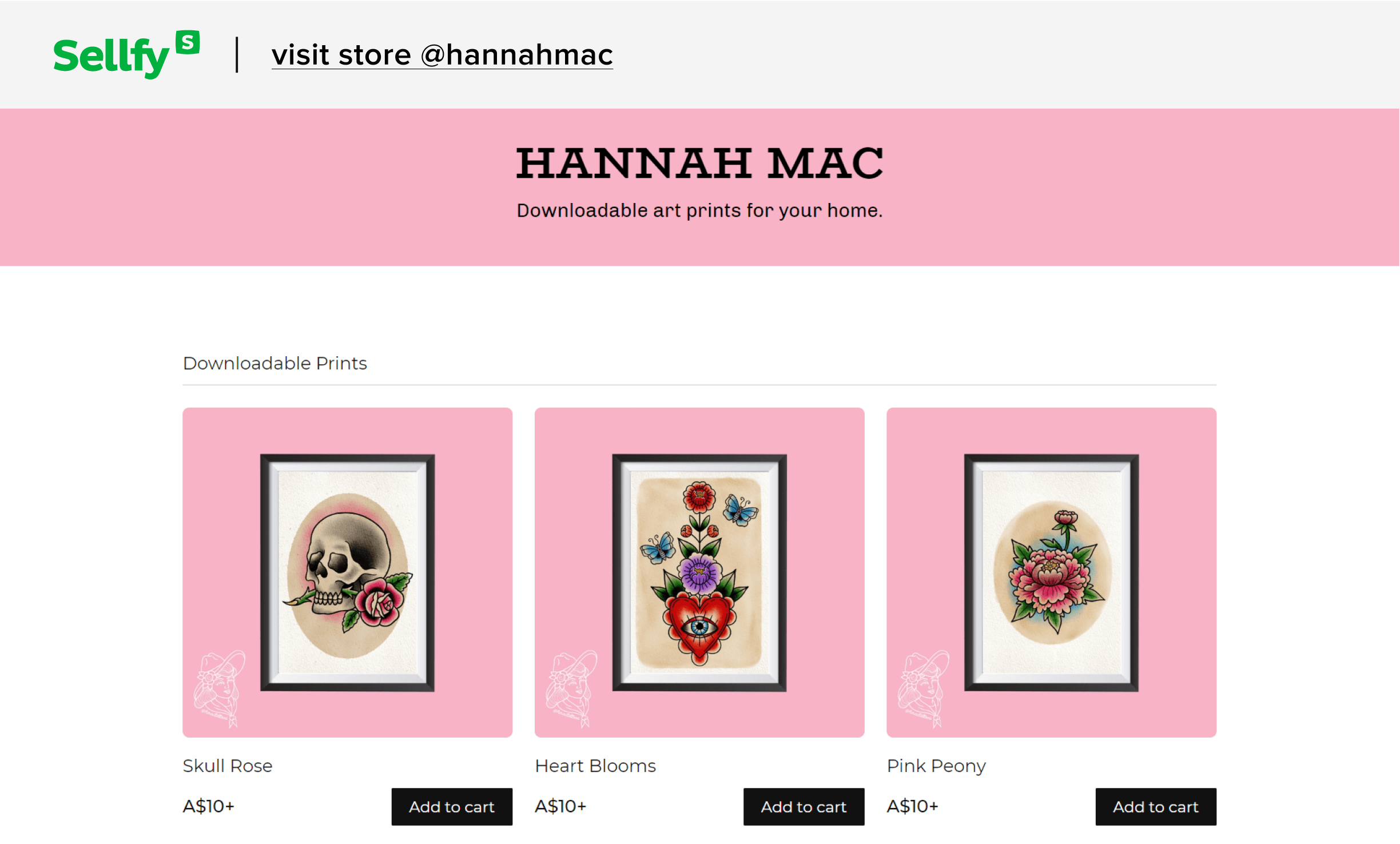
Pros:
- This type of gig makes your art available to fans who may not be able to pay for an original piece, allowing you to diversify your target audience.
- A convenient form of passive income that can bring you earnings for an unlimited time.
Cons:
- Small earnings per piece mean that you’ll have to sell many to earn a fair amount.
5. Selling other types of merch with your art
The easiest way to get your art printed on tangible products is using a print-on-demand, or drop shipping service. This type of service will take care of printing, packaging, branding, and shipping of your custom products to your customers. Some well-known print-on-demand services are Society6, Zazzle, and Printful.
Some merchandise you can sell with your art on it:
- Wedding invitations, party decorations, etc.
- Greeting cards (Christmas, Birthday, Thanksgiving, etc.)
- Diaries, journals, planners
- T-shirts, hoodies, kids clothes
- Pillowcases, towels, and other home decors
- Phone cases, mugs, and other souvenirs or gifts
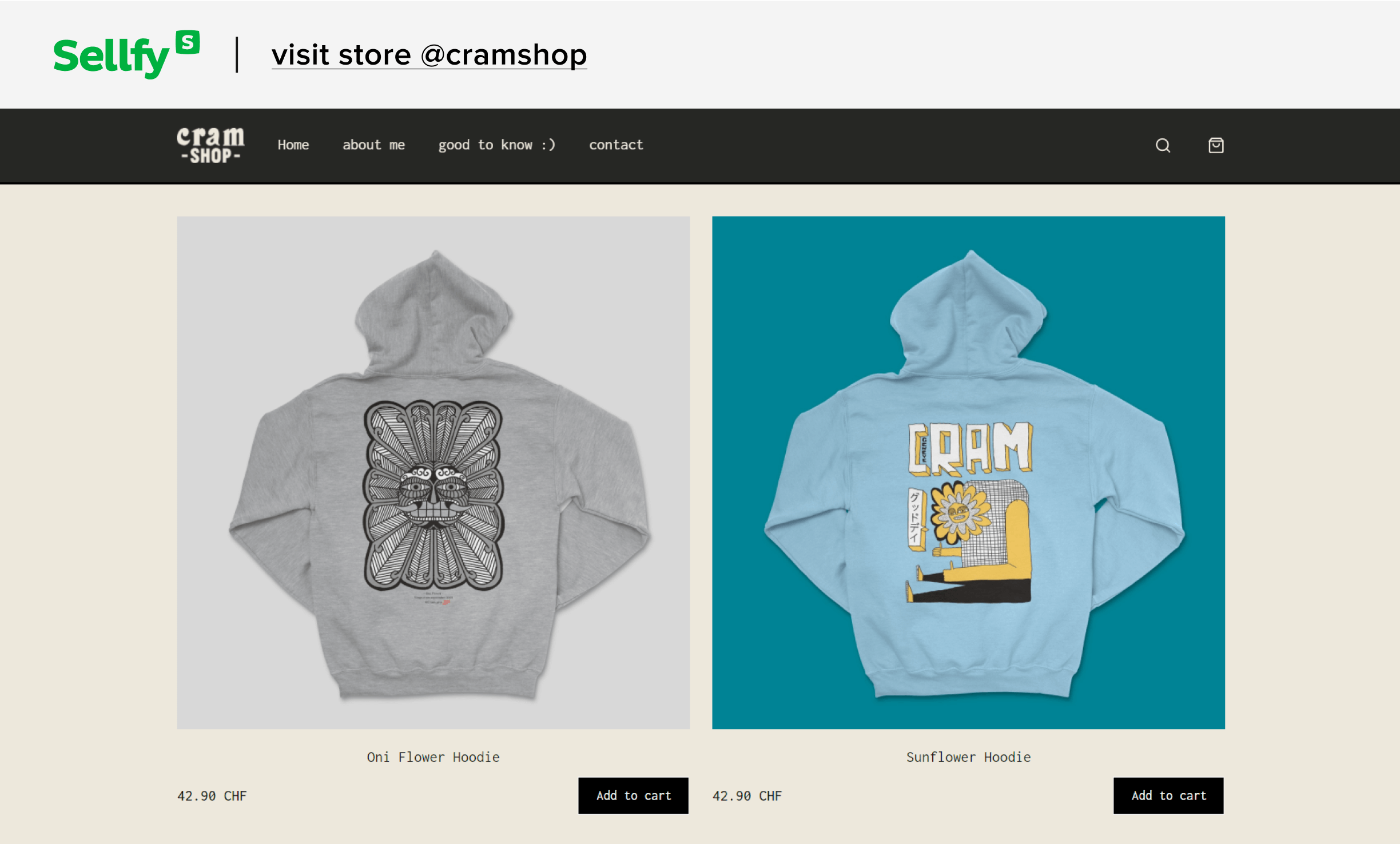
Pros:
- A pleasant and hassle-free way to earn money is by creating a real-life product.
Cons:
- A significant cut (~25%) of your profit will go to the print-on-demand service.
6. Seeking commissions for original work
Commissions are a popular strategy that many beginning artists and illustrators can use to learn how to make money—both online and offline.
The best place to start is by showcasing your work on your social media. Don’t forget to mention in your bio that you accept commissions—be it portraits, artistic photo sessions, or any other form of art.
With any luck, your first customers will spread the word, and your potential clients will approach you themselves.
Alternatively, these online platforms unite artists and people who want to commission portraits or other artwork:
- Artfinder
- Artists&Clients
- ArtCorgi
- Art Please
Not sure how much to charge?
Start by finding a portrait artist who is on a similar artistic skill level to you, and see what they charge. Alternatively, take your average hourly rate, multiply it by the approximate number of hours needed to complete the task, and add the price of the materials used.
Note that original work tends to sell way higher than prints, so use this as an argument when explaining the price to your customers.
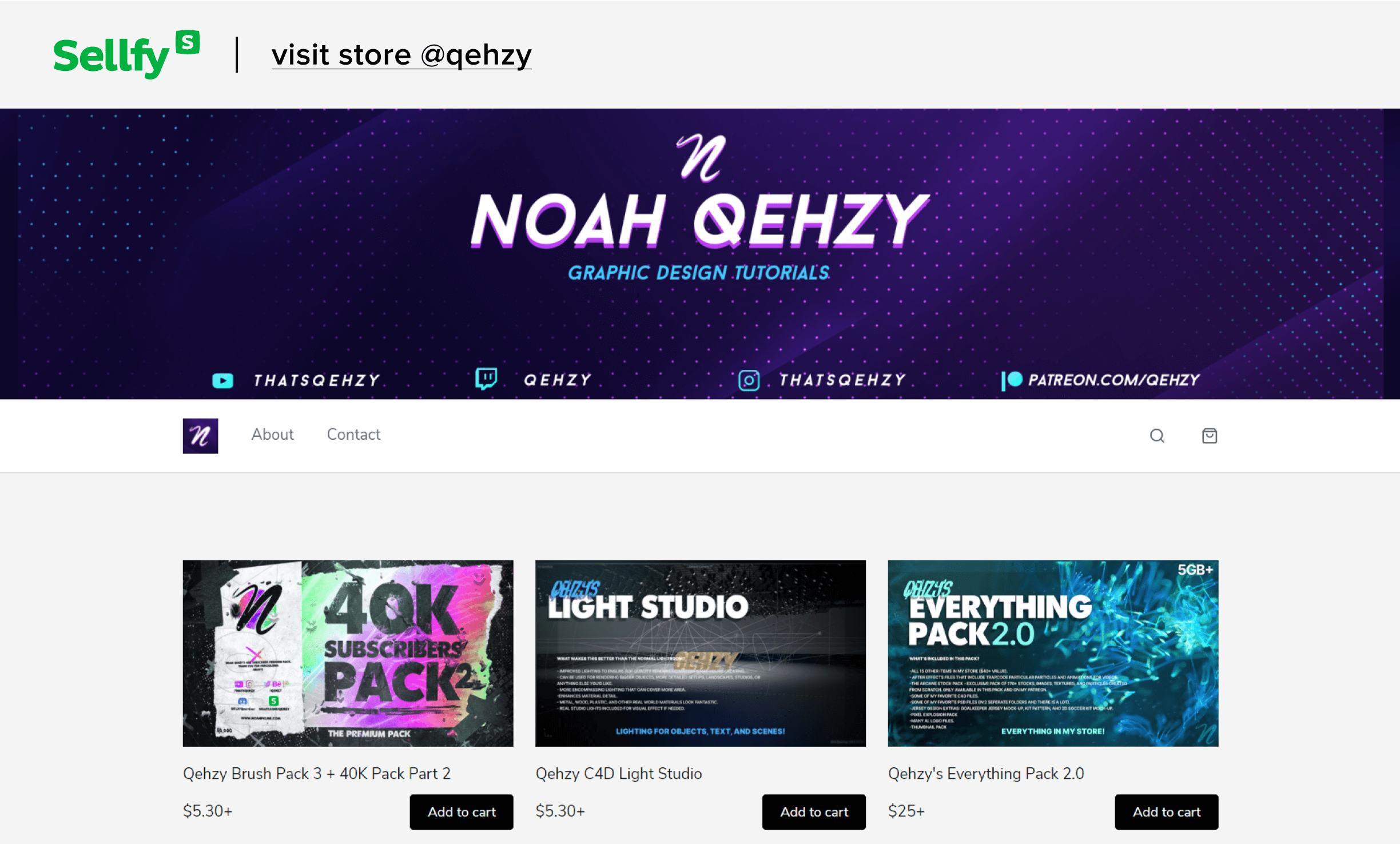
Pros:
- Earning a living as a portrait artist can be lucrative
Cons:
- It can be complicated to deal with some customers, and you won’t be able to avoid dealing with them like you would when selling your prints online.
7. Writing an art blog
Do you have an interest in sharing your artistic skills in a written format?
It’s true that artists are usually more into visuals than words. However, thanks to online courses and guides, anyone can become a writer nowadays.
Besides, your blog can be richer in imagery than words. For example, if you teach your readers a particular painting technique, the texts will only have to support the visuals and explain the actions depicted.
So, if you don’t resent writing altogether, here are some ideas for an art blog:
- Tips or tutorials on how to achieve the best result in your master technique
- Reviews of new art supplies
- Opinion articles about new art trends and movements
- Interviews with local artists
- Reports about a new exhibition or art gallery
- Freelance artist tips
- Beginner artist tips
- Create videos showing how you paint, and then share written tips about it
You might be wondering:
This is great, but how do I earn money from it?
There are many ways to earn extra income by blogging. Some of the most popular ones are affiliate marketing, paid ads, creating commissioned reviews, and promoting your other products via your blog. Find out more about how to earn with blogging in this article.
Note! Your blog and your portfolio are two different things. In your portfolio, you should show off your artwork, talk about yourself and mention how to order your services. However, in your blog, you shift the focus to the reader and produce useful content about various topics. Portfolio and blog can be merged into one website but should have separate sections.
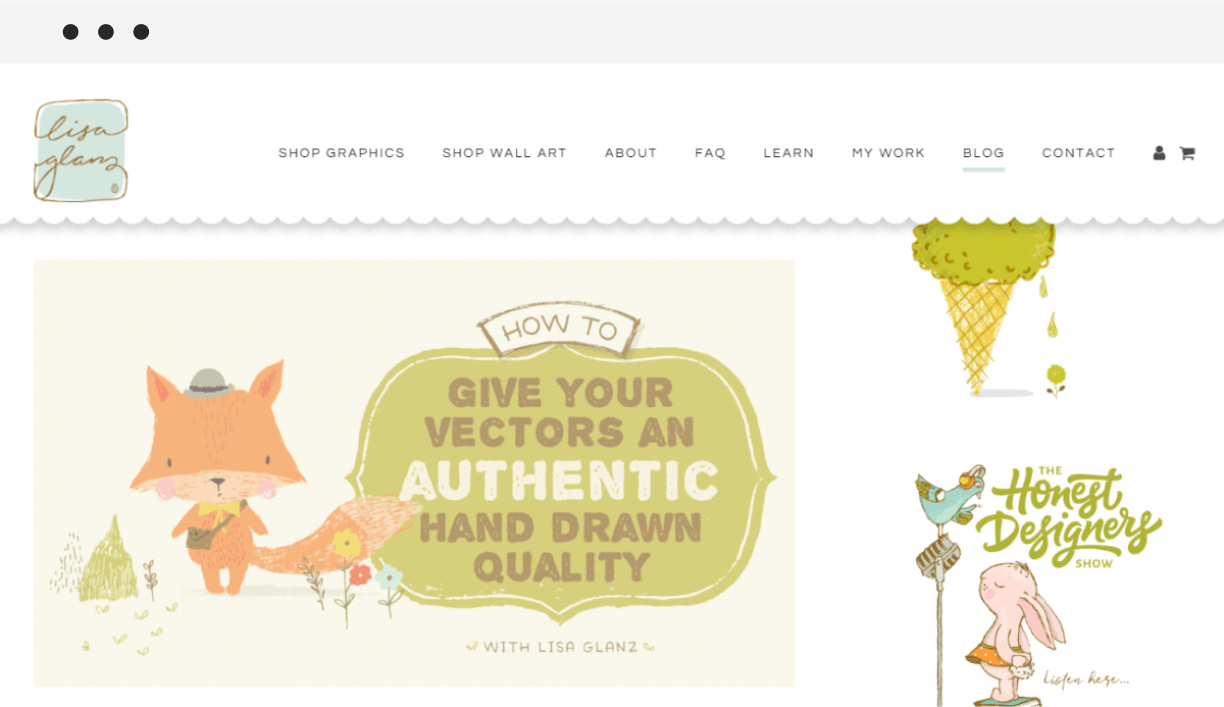
Pros:
- In your blog, you’ll have unlimited opportunities to express yourself, share your opinion and interact with your fans.
Cons:
- Unless you treat blogging as a full-time job, you probably won’t earn enough to make a living.
- Blogging can be time-consuming and yield results only in the long term.
8. Selling art on Etsy
Have you been looking for a way to sell art online? Apart from Sellfy, Etsy is another option. This marketplace gives you the chance to showcase your art to a wider target audience and take your art business to the next level. Hundreds of sellers have been able to make a steady income by selling on Etsy.
What makes this marketplace so popular is that you can sell almost any creative work:
- Jewelry and accessories
- Clothing
- Wall decor
- Visual arts
- Art & collectibles
Not only is Etsy known as a place for finding unique handmade items, but also for awesome digital art. Etsy’s diversity attracts different types of customers to their marketplace, which can really work in your favor.
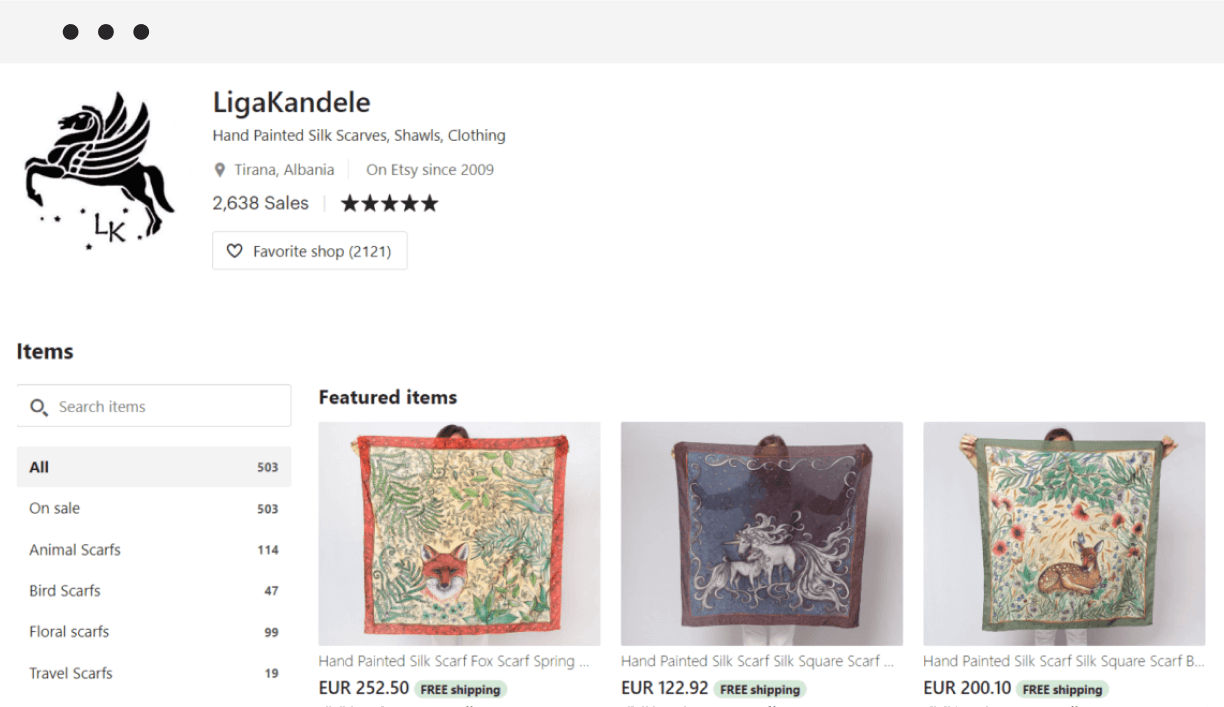
Pros:
- Relatively easy to set up if you don’t have a website.
- Offering free shipping can give you a significant advantage—your items will rank higher.
Cons:
- Harder to stand out among competitors. The best way to beat the tough competition and get noticed is to sell niche artwork.
- Etsy has a transaction fee of 5% on each sale.
9. Selling digital art on Creative Market
While Etsy lets you sell both physical and non-physical goods, Creative Market is a marketplace that is meant for selling digital art in particular. It narrows down the audience but attracts customers specifically looking for digital assets.
Examples of what you can sell:
- WordPress themes
- Clip art
- Stock photography
- Templates
- Fonts
- Business and premade blog logos
- Branding kits
- Lightroom presets
- Illustrations
So, if you have a knack for design, why not try it out? For tips on design tools, feel free to head over to our blog post on 17 graphic design tools every designer should use.
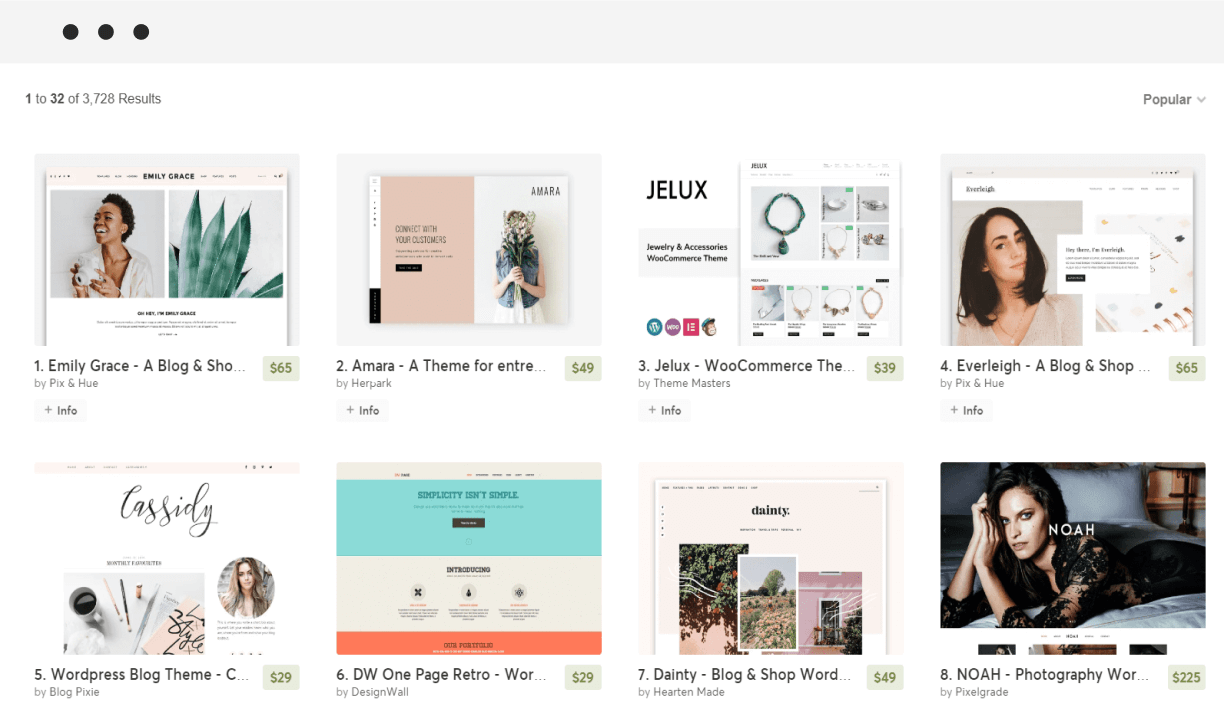
Pros:
- Easier to reach your audience as the platform is very popular for digital art.
- Neat and simple seller’s interface.
Cons:
- USD is the only currency, which might be inconvenient if your art business isn’t registered in the US.
- Takes a 40% art commission on each product sale.
10. Selling canvas paintings on Saatchi Art
Despite the popularity of digital art on the internet, fine art is still considered to have more value than digital art pieces. Why? Because traditional art cannot be easily reproduced.
Since canvas paintings are handmade, they’re truly unique pieces of art. If you’re skilled with a brush, you could sell paintings to homeowners looking for timeless pieces to hang on their walls.
For example, you could try selling your canvas paintings on an online venue like Saatchi Art. Once you’ve set up an account, you can start promoting on social media. When a potential customer makes a purchase, you’ll receive an email confirmation of the sale.
The next step would be to pack the artwork, print out the shipping documents, and hand it over to the courier on the agreed pick-up date.
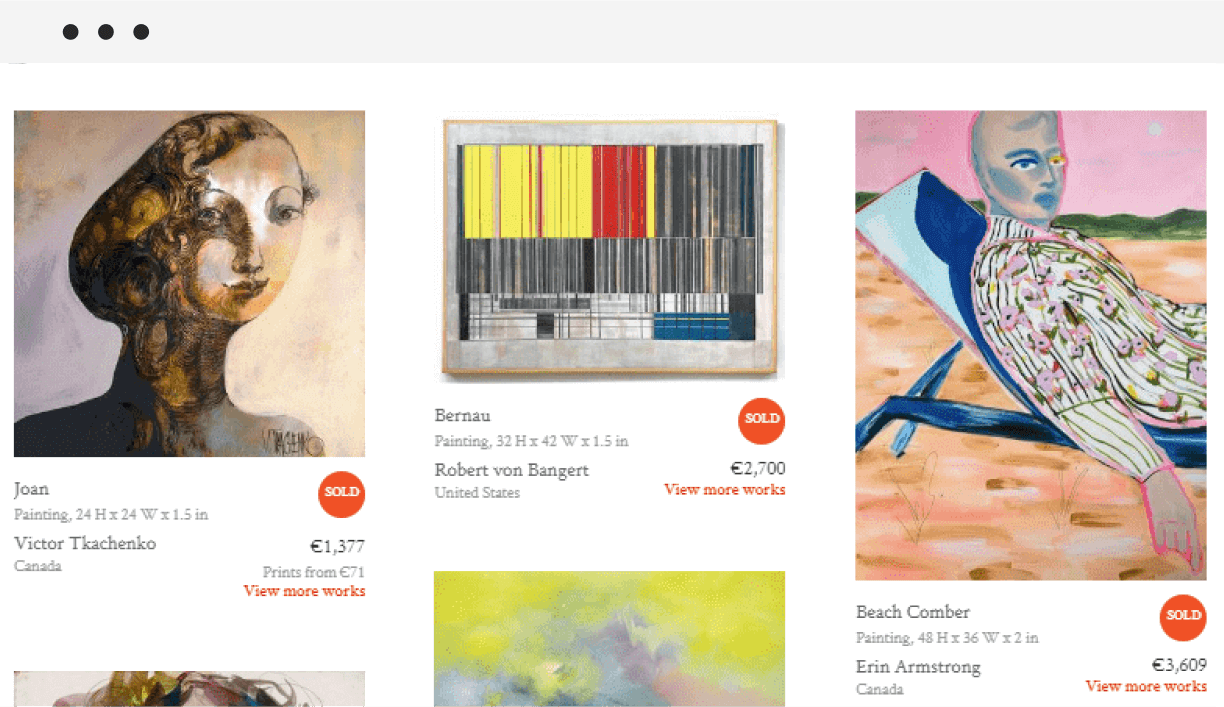
Pros:
- You can create an account for free.
- If you don’t want to sell original pieces, you can also sell art prints of your original works.
Cons:
- You will be responsible for packing and shipping your own art pieces according to their requirements.
- Takes a 30% commission on each sale.
11. Earning income with YouTube art tutorials
If packing and shipping or selling on an online marketplace is not your thing, perhaps filming art tutorials or speed painting videos is. With over a billion users, YouTube is the perfect platform for promoting your artistic talent.
Video tutorials are highly sought after as people love visual learning. All you need is filming equipment and a willingness to put yourself out there for the art world to see.
To get noticed on YouTube, here are a few steps you can take:
- Define your niche and audience
- Research keywords and your competitors
- Upload at least twice a week, if not more
For filming, you can use a smartphone, DSLR or video camera. Make sure that there’s enough light in the room when you’re filming.
Apart from art tutorials and speed painting videos, you can also:
- Film art supplies reviews
- Start a vlog of your life as an independent artist
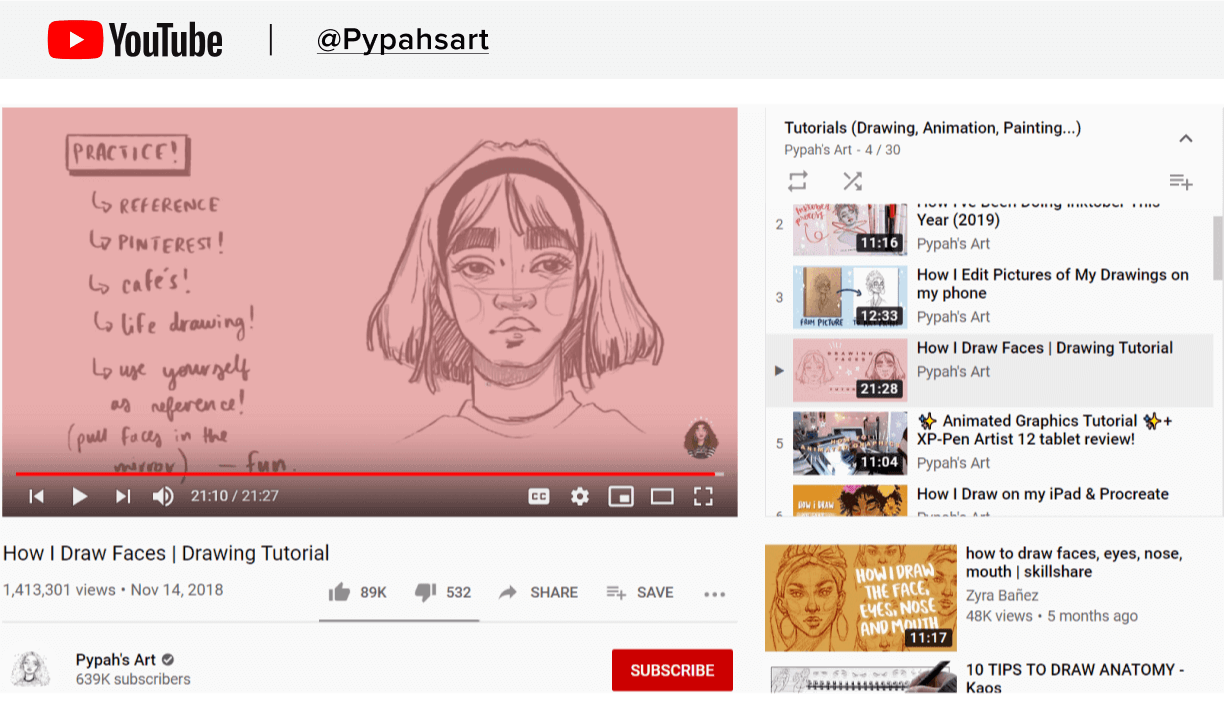
Pros:
- You can become an online authority and influencer in your niche.
- With high-quality videos, there’s huge potential for gaining subscribers and becoming popular.
Cons:
- A challenge if you’re camera-shy.
- Filming and editing can be quite time-consuming.
12. Selling at art fairs, conventions, or festivals
Earning extra money with your passion doesn’t always have to be done online. In fact, going to art fairs can also be a great way to sell art if you’re able to connect with the right people.
Although a large percentage of young people love online shopping, some still prefer seeing items at art fairs (such as the elderly) before making a purchase.
So if your neighborhood happens to be extra interactive and engaging, you’re in luck. The best way to start would be to search for local art fairs or festivals in your area.
Once you’ve registered for one, make sure to bring:
- Business cards with your brand name or logo
- Items to decorate and personalize your booth
- Ready-to-be-sold artwork or handcrafted items
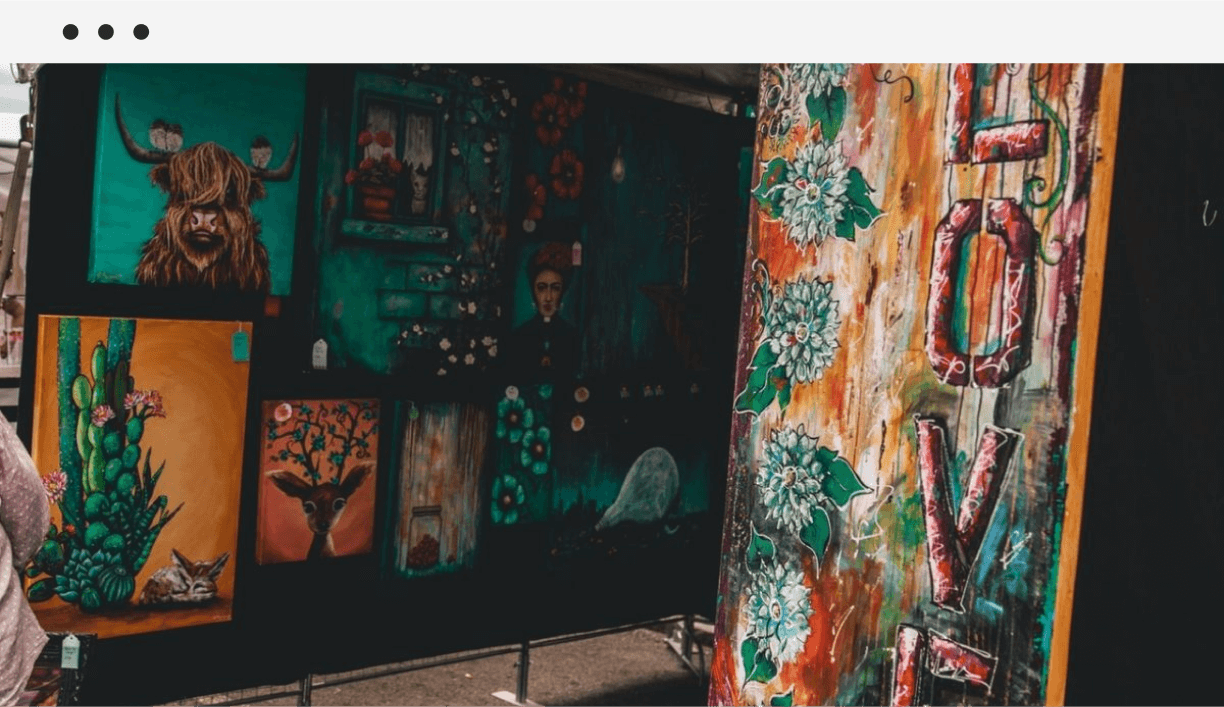
Pros:
- If people love your products, your name will likely bring you local fame.
- A potential way to increase your sales within one day if the art fair is large and attracts a lot of people.
Cons:
- Lower chances of earning if the fair doesn’t get enough visitors (however, you can still give your contact information — someone might still decide to make a purchase later).
- Your physical presence will be required for the entire duration of the art fair. This could mean taking a break from art school or a day off from hard work (if you have a full-time job).
13. Selling AI or NFT art on Instagram
Instagram has become the No. 1 social media platform for artists and art lovers. What better place could there be to promote your art? You don’t need to climb the social ladder and wait for big-name critics to call the shots. Instead, you can connect with buyers across the globe willing to pay for your AI or NFT artwork.
There’s a catch, though.
It all comes down to how many engaged followers you have—the more popular your Instagram account, the higher the demand for your digital art. So if you feel like you could gather more followers, start there.
We’ve already covered the technical side of using Instagram for boosting sales.
When selling art on Instagram, follow these additional tips:
- Post high-quality images
- Stick to your unified style or brand—find a certain filter, hashtag, language, etc. that represents you and your art
- Write creative captions that tell a story
- Use relevant hashtags (that correspond to keywords representing your art)
- Write an attractive bio (it’s the only place where followers can click on a link)
- Post on a regular basis (at least twice per week)
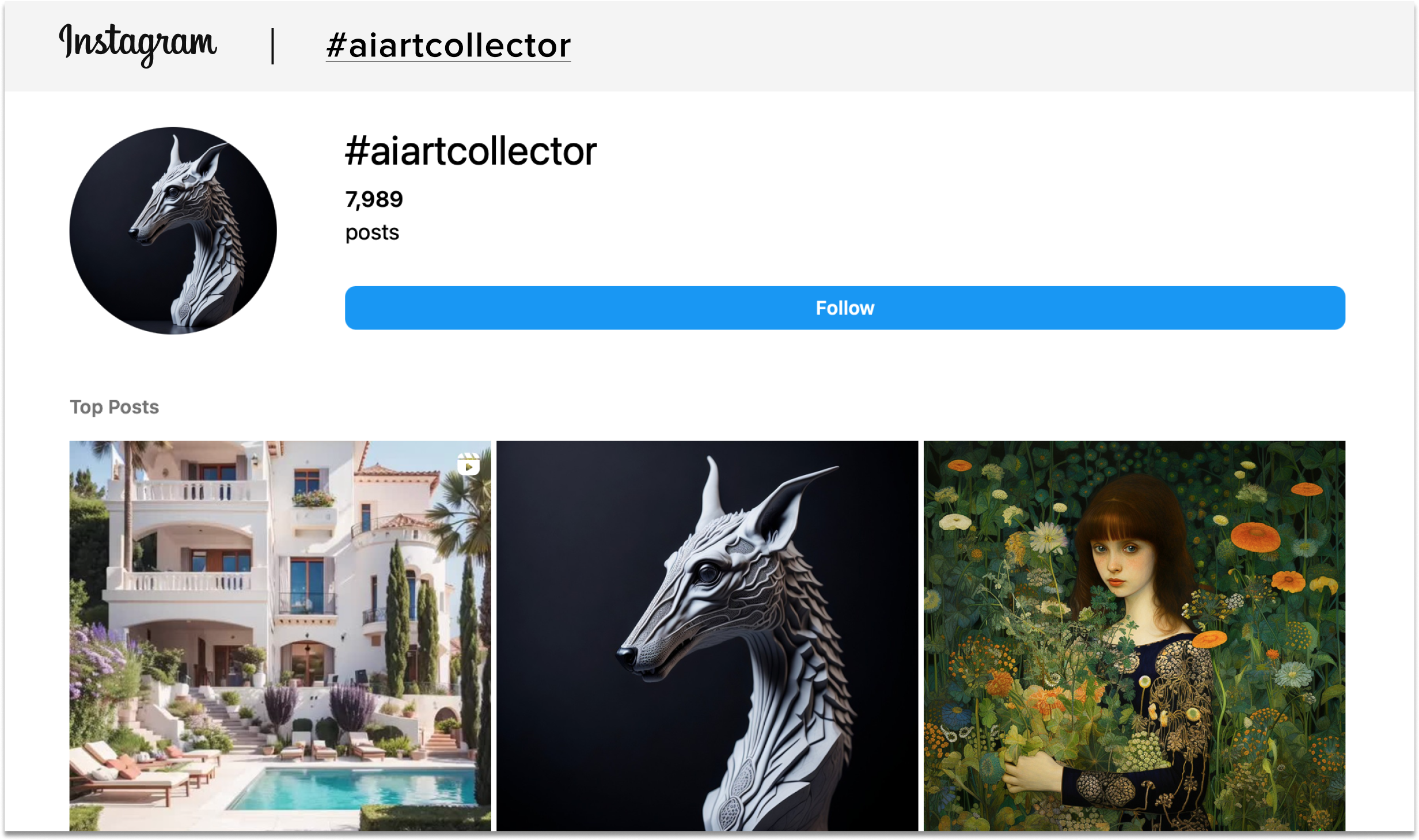
Important! Whenever someone sends you a message showing interest in your work, redirect them to your sales page or Sellfy store.
Pros:
- By selling on Instagram, you’re shooting two birds with one stone—you showcase and promote your work while guiding the potential buyer into your sales funnel.
Cons:
- You probably won’t receive significant income right away, especially if your follower base is still not large.
FAQ: how to make money as an artist
How do I start making money as an artist online?
There are numerous ways for artists to start making money online—you don’t have to be a starving artist! Consider selling original artwork, prints, merchandise, and digital products like art tutorials or presets. You can also try selling print-on-demand products by putting your artwork on t-shirts, mugs, or other items. All of this is possible with a platform like Sellfy, where you can sell digital, physical, subscription, and even print-on-demand products from your own online store.
Can I sell my art online?
Yes, selling your art online is a fantastic way to reach a global audience and monetize your talent. Platforms like Sellfy enable artists to showcase and sell their artwork directly to customers. You can upload high-quality images of your art, set prices, and handle secure payment processing. Utilize online marketing strategies, SEO, and social media to drive traffic to your online store and increase sales.
Can I turn my art into digital products?
Absolutely! Transform your art into products like art prints, wallpapers, art brushes, or digital art packs. These products have a high demand and are easy to distribute. Convert your artwork into digital formats, ensure the quality is retained, and upload them to platforms like Sellfy. This allows customers to purchase and download your art instantly, expanding your market reach and boosting your revenue as an artist.


![Squarespace vs Big Cartel: A Definitive Comparison [January 2025]](https://wp.sellfy.com/blog/wp-content/uploads/2025/01/Squarespace-vs-Big-Cartel-2.png)
![Squarespace vs Etsy: A Definitive Comparison [January 2025]](https://wp.sellfy.com/blog/wp-content/uploads/2024/12/Squarespace-vs-Etsy-2.png)
![Stan Store vs Gumroad: The Complete Comparison [January 2025]](https://wp.sellfy.com/blog/wp-content/uploads/2024/11/image-26.png)
